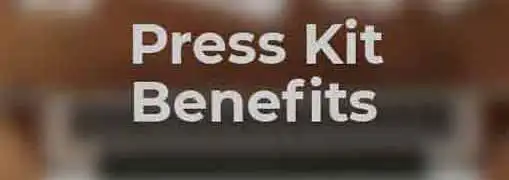Press Kits
Cover Letter for a Press Kit
A good cover letter is an important part of your company's press kit. Here's how to create a press kit cover letter that will tell recipients why they should care about everything else in the kit.
Cover letters set the stage for everything else that is contained in a press kit.
Without a cover letter, media recipients may not understand why they are receiving the material that has been sent to them. Even worse, they may not have an incentive to dig for the nuggets that are buried deeper in the information packet.
Unfortunately, many companies treat cover letters as throwaways. They don't put much thought into the content and may even use a form letter format to present the press kit to media reps. Even though the material contained in a cover letter isn't as detailed as the content contained in the rest of the media kit, a well-crafted cover letter serves a critical purpose because unless it is effective, there is a good chance the media contact won't read the rest of your content.
The first rule of press kit cover letters is that they need to be brief. Their purpose is to provide a focused overview of your company's message - not to reiterate the content that is found elsewhere in the packet. If your cover letter is longer than one page, you need to go back to the drawing board because it probably means you have failed to focus your message.
- Personalization. Prepackaged press kits are common practice in PR circles. But the cover letters that are included in press kits should be personalized for each recipient. Sometimes it's enough to personalize the date and name fields; on other occasions, you may need to rework the letter's content to appeal to specific recipients.
- Primary messaging. The cover letter should quickly and succinctly state the press kits primary message. For example, if your primary message is the release of a new product, briefly state the company's most important stats (size, years in business, etc.) and then go into a short description of the product release with a few sentences describing why the new product matters.
- Details. The key to a successful cover letter is to provide enough details to pique the recipient's interest without overwhelming them. A few strategically placed stats and details are usually more effective than a bulleted list of facts and figures.
- Contact info. The person who signs the cover letter should also be the person who has been designated as the company's press contact. Include contact information below the signature so reporters won't have to search for phone numbers and email addresses.
- Request. The distribution of a press kit is an invitation for a media response. You're essentially trying to sell the recipient on a story idea or other PR opportunity. Like any good sales device, your sales letter should clearly describe what you want from the recipient, whether it is a news story or an opportunity to talk more about your company and products.
Share this article
Additional Resources for Entrepreneurs



Conversation Board
We greatly appreciate any advice you can provide on this topic. Please contribute your insights on this topic so others can benefit.